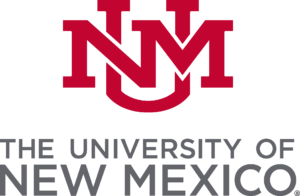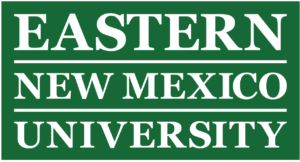
The best Hispanic-serving nursing schools train and educate Hispanic and Latinx nurses for a growing population. As the Hispanic and Latinx community continues to flourish across the United States, the need for communication with Spanish-speaking patients is on the rise. This language is one of the most common languages, and for many of those who use it frequently, it is their only language. Some have the ability to speak some English, but in many cases, it is not to the extent that they can deliver accurate descriptions and properly communicate with a doctor. While nurses are learning to become bilingual in many of these areas, many facilities and nursing schools are looking to recruit nurses that are ethnically Hispanic and Latinx for their patients.
In an attempt to close the demand gap that currently exists in the field of nursing, healthcare facilities in areas with a large Hispanic population are reaching out to these communities to encourage members of these societies to pursue nursing as a career. The same is true of nursing schools in these areas, especially in Texas, California, and Florida. Today there are many US Department of Education-designated Hispanic-Serving Institutions throughout the US.
How We Ranked the Best Nursing Schools for Hispanic Nurses
Featured Programs
To rank the top nursing schools at Hispanic-Serving Institutions, we began in an obvious place: the Department of Education list of designated HSIs. From there, we researched HSIs with accredited nursing programs. From the remaining pool, we ranked programs according to four criteria: Alumni Salary, Cost, Ranking, and Student Reviews. Data came from U.S. News & World Report, Niche, IPEDS, and College Scorecard.
1. San Diego State University

San Diego State University’s School of Nursing offers several baccalaureates and master’s degree programs. The school’s nursing programs have accreditation from the Commission on Collegiate Nursing Education (CCNE). Furthermore, SDSU sits near the American and Mexican border, so the school, with more than 30% Hispanic students, represents an overall diverse population. This includes the many Latina nurses studying for a Bachelor’s or Master’s nursing degree, or those Latina nurses who hold a Registered Nursing license studying for their Bachelor of Science degree (BSN).
San Diego State University opened in 1897 as the San Diego Normal School. SDSU is the 3rd oldest member school of the California State University system. The school’s 275+-acre urban campus is home to about 35,000 students studying from more than 300-degree programs at the baccalaureate, master’s, and doctoral levels. The university has been recognized as the #1 small research institution of higher learning in the nation.
Hispanic Representation: 30%
2. Florida International University

Florida International University’s Nicole Wertheim College of Nursing & Health Sciences offers bachelor’s and master’s degree nursing programs. The school is situated in the Florida city of Miami, a city whose Hispanic population reaches 70% of the entire population. FIU’s Hispanic nurses, studying in one of the FIU’s nursing programs, account for more than 50% of the nursing student population.
Florida International University opened in 1965 and is a member school of the State University System of Florida. The school’s dual campuses are located in the Greater Miami area and are home to more than 56,000 students. Florida International University operates 23 colleges and schools and is the fourth biggest university in the nation. Florida International University is the largest institution of higher education in the state of Florida.
Hispanic Representation: 64%
3. Texas Woman’s University

Texas Woman’s University’s College of Nursing offers varying levels of nursing degrees on all three of its campuses located in Denton, Dallas, and Houston. Many Latina nurses study at TWU’s Houston Health Sciences campus. Houston’s Hispanic population is about 44%, the largest of any demographic. TWU offers nursing degree programs on the baccalaureate, master’s, and doctoral level, the more than 900 nursing students enrolled each year. Those Hispanic nurses earn their TWU nursing degree in Houston from educators working at the world-class Texas Medical Center.
Texas Woman’s University was established in 1901 as a women’s school but now operates coeducationally. The school’s 250+-acre suburban campus in Denton is home to more than 10,000 students. Additionally, TWU operates two health centers in Houston and in Dallas. Texas Woman’s University is one of only 4 public institutions of higher learning that operates independently of a Texas university system.
Hispanic Representation: 28%
4. Texas State University

Texas State University’s St. David’s School of Nursing offers several academic levels of nursing degrees. Latina nurses reaching for the Bachelor or Master’s of Science in Nursing study from programs that have received accreditation from the Commission on Collegiate Nursing Education (CCNE). Minority students represent more than 1/3 of Texas State University’s student nurse population. St. David’s School of Nursing has been awarded the LEED award (Leadership in Energy and Environmental Design). Latino nurses have the option to study abroad through TSU’s study-abroad program.
Texas State University was established as a state university in 1899. The school holds the distinction of being a space-grant and land grant university that operates with ten schools/colleges. The school’s campus in San Marcos is home to more than 38,000 students. Lyndon B. Johnson graduated in 1930 from TSU. Texas State University is the largest member school within the Texas State University System.
Hispanic Representation: 36%
5. Texas A & M International University

Texas A & M International University’s College of Nursing and Health Sciences offers four baccalaureates and two graduate degree nursing programs that have received accreditation from the Accreditation Commission for Education in Nursing (ACEN), and the Texas Board of Nursing. Many Latina nurses earn their nursing degrees from Texas A & M International University as the city’s Hispanic population exceeds 95% of its population. The school offers Latino nurses a student-to-faculty ratio of 10 to 1.
Texas A & M International University was established in 1969 as a state university. The university’s 300-acre campus in Laredo is home to more than 7,400 students studying from more than 70 degree programs. The school operates with four colleges — Business, Arts, Education, and Nursing. Texas A & M International University was recognized as one of the fastest-growing universities that offer graduate degrees.
Hispanic Representation: 95%
6. New Mexico State University – Las Cruces, NM

The New Mexico State University School of Nursing offers bachelor’s, master’s, and doctoral levels of nursing degrees that have received accreditation from the Commission on Collegiate Nursing Education (CCNE). The city of Las Cruces is made up of more than 55% Latino-Americans. NM State’s Las Cruces campus offers Latina nurses a great opportunity to earn a nursing degree to jumpstart their nursing careers. NM State’s doctoral nursing program is considered one of the most affordable DNP programs in the nation.
New Mexico State University was established in 1888 as the Las Cruces College. New Mexico State University is a land grant and space grant university with its main campus in Las Cruces. The school’s 900-acre campus is home to more than 21,000 students studying more than 150 different degrees. New Mexico State University holds the distinction of being the oldest public school in New Mexico.
Hispanic Representation: 56%
7. University of Houston

The University of Houston’s College of Nursing offers a variety of academic levels of nursing degrees for busy Hispanic nurses who wish to further their nursing education to prepare for leadership nursing roles. The University of Houston’s nursing programs has been recognized as the top nursing school in Texas. Each of the University of Houston’s (UH) College of Nursing degree programs has received accreditation by the Commission on Collegiate Nursing Education (CCNE) and the Academic Progression in Nursing (APIN).
The University of Houston (UH) was established in 1927. UH is a member school and flagship campus of the University of Houston System. Furthermore, the school’s 650+-acre urban campus is home to more than 42,000 students studying from the more than 275-degree programs offered. Also, UH holds the distinction of being the third-largest institution of higher learning in the state of Texas.
Hispanic Representation: 25%
8. University of New Mexico

The University of New Mexico Health Sciences Center College of Nursing offers a variety of academic nursing degrees including bachelor’s, master’s, and doctoral level programs. Many Latina nurses choose to earn their nursing degrees from the University of New Mexico, as the city’s Hispanic population exceeds 46% of its total. US News recognizes the College of Nursing’s graduate and doctoral programs as among the best in the country. The Commission on Collegiate Nursing Education (CCNE) accredits UNM’s Health Science Center’s nursing degree programs.
The University of New Mexico was established as a public institution of higher learning that opened in 1889. The school’s 600-acre main campus in Albuquerque is home to the majority of the 26,000-student enrollment. The school operates with branch campuses across the state in Los Alamos, Rio Rancho, Gallup, Los Lunas, and also Taos.
Hispanic Representation: 29%
9. Texas A&M University at Corpus Christi

Texas A&M University at Corpus Christi College of Nursing & Health Sciences offers a variety of nursing programs at various academic levels to the many Hispanic residents in and around the Corpus Christi metropolitan area. Undergraduate nursing programs Latina nurses can choose from are offered traditionally, on an accelerated track, online, or through military delivery options. The nursing programs from TAMU-CC have been recognized as affordable online options. Latino nurses who hold an RN can complete their Continuing Education requirements at Texas A & M as well.
Texas A & M University-Corpus Christi was established in 1947. Texas A & M University-Corpus Christi is a member school of the Texas A&M University System. The school’s 375+-acre Ward island campus is home to more than 12,000 students. Texas A & M University-Corpus Christi operates with five schools/colleges that offer more than 60 baccalaureate, master’s, and doctoral degree programs.
Hispanic Representation: 36%
10. University of St Thomas

The University of St Thomas’s Carol and Odis Peavy School of Nursing offers nursing programs that have received accreditation from the Commission on Collegiate Nursing Education (CCNE). This Houston-based school offers the Hispanic population in south Texas an opportunity to start or advance their career using hands-on learning processes on state-of-the-art equipment. One such program is a Bachelor of Science degree program (which prepares students to sit for their RN licensure) and a fast-track program to earn a Doctor of Nursing Practice (DNP).
The University of St Thomas was established in 1947. UST was founded by Basilian Fathers and remains affiliated with the Roman Catholic Church. UST’s urban campus serves more than 3,700 students. The University of St Thomas operates as the only institution of higher learning overseen by the Archdioceses of Galveston/Houston.
Hispanic Representation: 25%
11. California State University San Marcos

The California State University, San Marcos School of Nursing offers nursing programs to empower the next generation of Latina nurses. California State University’s offer these program on campus and online. CSUSM’s School of Nursing has been recognized among the best nursing schools in the state of California. The school offers traditional, accelerated, and online nursing programs to meet the needs of each student. Additionally, nursing degree graduates pass the NCLEX pass rate of nearly 98%.
California State University San Marcos opened in 1989. CSU is one of the 23 member schools that make up the California State University system. The school’s 325+-acre campus is home to nearly 14,000 students studying for degrees offered by the school’s colleges. CSUSM’s campus is in San Marcos, about eight miles from the Pacific Ocean and only a half-hour north of San Diego.
Hispanic Representation: 28%
12. CUNY Lehman College

The City University of New York’s Lehman College School of Health Science, Human Services, and Nursing offer nursing programs that have been recognized as the finest offered in the state of New York. Nursing degree graduates enter the nursing field prepared to professionally contribute to the health needs of each patient. The largely Hispanic population in the New York City borough of the Bronx has a great opportunity to earn a nursing degree from a top-rated school CUNY Lehman College.
CUNY Lehman College became an independent school in 1967. The school was originally created as a Hunter College branch campus in 1931. Lehman College was named for the US Senator and New York governor, Herbert Lehman. The school’s campus is located in the most northern borough of New York City and home to more than 10,000 students. Lehman College facilities were used as a temporary headquarter for the brand new United Nations.
Hispanic Representation: 27%
13. California State University, Stanislaus

California State University, Stanislaus’ School of Nursing offers a variety of nursing programs that have received accreditation from the Commission on Collegiate Nursing Education (CCNE). Latina nurses living near or in the surrounding areas of Turlock have an opportunity to earn their nursing degree from CSU Stanislaus, a university that has been recognized by America’s Best Nursing Schools, and the California Board of Registered Nursing.
California State University Stanislaus started as a public institution of higher education in 1957. It is a member school of the California State University system. The school’s 225+-acre suburban campus in Turlock is home to more than 9,700 students studying at CSU Stanislaus’ four schools and colleges. Stanislaus has been recognized among the top ten West Coast universities.
Hispanic Representation: 23%
14. California State University, San Bernardino

California State University, San Bernardino is well-known for its graduate and undergraduate nursing programs. The nursing school at Cal State San Bernardino is different in that it offers both online and traditional educational options. The hybrid format BN to RSN program is especially popular. CSUSB is also known for producing many Hispanic nurses, and both Latina nurses and Latino nurses may find that the diverse faculty in the nursing program helps them fit in.
CSUSB as a whole is known for being a very diverse school. In fact, the total enrollment of Hispanic students at the school is the third-highest of any higher education institution in California. There is also a large population of African-American students at the school. The president of CSUSB is Tomas Morales, making the school one of the few in the region with a Hispanic president.
Hispanic Representation: 62%
15. University of Texas Rio Grande Valley

The University of Texas Rio Grande Valley is one of the leading nursing schools in the country for Hispanic students. UTRGV offers both BSN and MSN programs. The various locations throughout the Rio Grande Valley, including the main location in Brownsville, have a combined percentage of Latino students that comes in near 90%. The numerous locations that hold classes make UTRGV more convenient than traditional single-campus schools. This makes UTRGV one of the largest universities in the country to have a majority Latino population. Many Latino nurses and Latina nurses want to attend a school that focuses on Hispanic nurses, and UTRGV certainly fits the bill.
UTRGV is the newest university in the huge University of Texas system, having just been opened in 2015. The school’s campus is in Brownsville, an overwhelmingly Hispanic region of the country. So, the university focuses on serving this population since its inception, making it one of the few public universities in the country to do so. UTRGV has an accredited medical school, something that most Hispanic-serving institutions do not have.
Hispanic Representation: 91%
16. University of Texas at El Paso

The University of Texas at El Paso is one of the largest and best-known Hispanic-serving institutions in the country. The nursing school at UT El Paso is highly regarded throughout the American healthcare system. It is unique in that it has been around for a long time, while nursing schools at many Hispanic-serving institutions are newly created. The nursing program at UTEP includes both BSN and MSN degrees. UTEP has been a haven for Latina nurses, Latino nurses and Hispanic nurses from various backgrounds since its inception many years ago.
UTEP is known for being extremely affordable, especially for Hispanic students. Tuition is relatively affordable, with in-state tuition rates being considerably cheaper than tuition for out-of-state students. Also, UTEP offers its Latino students a wide variety of different grants and scholarships to help them finance their educations without going into debt. UTEP is classified as a “Highest Research Activity” institution by the Carnegie Foundation.
Hispanic Representation: 83%
17. Mount Saint Mary’s University – Los Angeles, CA

Mount Saint Mary’s University is a small private college in Los Angeles with a notable undergraduate BSN nursing program. Few small private schools have nursing programs, as such institutions often focus on liberal arts. MSMU not only has a well-respected nursing program; it also has one of the most diverse programs in the Los Angeles area. Los Angeles is known for its large Latino population, and this is reflected in the demographics of MSMU students. This makes MSMU one of the best schools in the area for Hispanic nurses, including both Latino nurses and Latina nurses.
MSMU is known for having a passionate and helpful alumni network. This alumni network is concentrated in Southern California, but MSMU alums can be found all over the world. Hispanic alumni especially are often eager to help out Hispanic students with career guidance and ongoing mentorship. MSMU has a 90% female student body, so Latina nurses may want to keep this school on their list.
Hispanic Representation: 62%
18. St. Thomas University

St Thomas University, a small private university in the Miami area, has a unique nursing program that includes many Hispanic students and faculty members. The nursing program at St. Thomas University is different because it offers a fully only Family Nurse Practitioner degree path, something that few Hispanic-serving institutions offer. This makes STU great for ambitious Hispanic nurses who want to advance into graduate nursing education, something that many Latino nurses and Latina nurses want to do.
STU is a small Catholic university in the Florida town of Miami Gardens. There is a large Catholic population in the Hispanic community and many prospective nurses from this background will feel right at home when they study at STU. Of course, students of all faiths are welcome at the university. STU’s nursing programs are accredited by CCNE, one of the most prestigious nursing accreditors.
Hispanic Representation: 58%
19. College of Mount Saint Vincent

The College of Mount Saint Vincent has a one-of-a-kind nursing program with BSN and MSN degrees. Mount Saint Vincent is a private liberal arts school, and their nursing program is unique because it integrates a liberal arts approach into nursing education. Latino nurses and Latina nurses who want to get a well-rounded education in nursing school should consider applying to Mount Saint Vincent, as it is one of the few institutions to offer Hispanic nurses this opportunity.
Mount Saint Vincent is known for its very low faculty-to-student ratio. It can be hard to find a nursing school in the New York City area that offers the same amount of personalized attention students can get at Mount Saint Vincent. This can help students from all backgrounds have a successful educational experience. Mount Saint Vincent’s nursing program is the most popular program at the College.
Hispanic Representation: 39%
20. Angelo State University

Angelo State University’s highly-regarded nursing program offers both BSN and MSN degrees. What sets Angelo apart from many of the other nursing programs on this list is its graduate certificate program, which helps students become certified as either Nurse Practitioners or Nurse Educators. The Nurse Educator program, especially, is hard to find. Latino nurses and Latina nurses who want to get a Nurse Educator certificate at an institution with a high population of Hispanic nurses should consider Angelo.
Angelo is known for being very affordable, with low tuition rates and plentiful financial aid available to students. There are many scholarships specifically targeted toward Hispanic students. Quite a few of these scholarships were actually created by Hispanic nurses who are Angelo alumni. Angelo has been named one of the best up and coming universities in Texas.
Hispanic Representation: 32%
21. Nova Southeastern University

Nova Southeastern University has a high-quality nursing program. The school is unique in that it offers a BSN, MSN, and even a Doctor of Nursing Practice degree. Few Hispanic-serving institutions offer a DNP degree. Latina nurses and Latino nurses who want to get a nursing doctorate at a school that caters to Hispanic nurses should take a look at Nova.
Nova also has many online education programs. The nursing school offers many different classes online to accommodate the busy schedules of working students. Even traditional classes often have an online component to enhance the learning experience. Nova is also one of the top ten universities for diversity in the nation.
Hispanic Representation: 30%
22. Fresno Pacific University

Fresno Pacific University’s nursing program focuses on the RN to BSN degree track. Many licensed RNs want to finish their bachelor’s degrees, and the program at FPU offers them the opportunity to do so. Latino nurses and Latina nurses who want to finish their BSN degree at an institution that has extensive experience working with Hispanic nurses should consider FPU.
FPU is a small Christian university that even includes a seminary. As with the other religious schools on this list, students of this particular faith may feel that they fit in better at FPU than they would at a secular university. Specifically, FPU is affiliated with the Mennonite denomination. FPU has a unique “Four Year Guarantee” undergraduate degree plan for students who want to complete their degrees in this time frame.
Hispanic Representation: 48%
23. Eastern New Mexico University

Eastern New Mexico University has a popular nursing program that offers both an RN to BSN track and an MSN degree. The program at ENMU is a little different because of its emphasis on training students to serve diverse populations. This makes it perfect for Latina nurses and Latino nurses who want to become part of the community of Hispanic nurses serving people from similar backgrounds.
ENMU is known for its affordability and variety of financial aid programs. The school offers students many work-study jobs on campus in Portales, which give students the opportunity to get work experience while completing their degrees. These jobs are available to students from all programs, including the nursing program. ENMU is a member of the Hispanic Association of Colleges and Universities.
Hispanic Representation: 35%
24. Adams State University

Adams State University has a respected undergraduate nursing program that is a little different in its area of focus. The program focuses on training RNs with their BSN degree option. Latino nurses and Latina nurses who want to get to work as soon as possible may want to consider the BSN nursing program at Adams State, as most Hispanic nurses are ADN, RNs.
Adams State is in the rural Colorado town of Alamosa. Many of its programs in various fields, including the nursing program, focus on serving rural populations. This unique focus allows students to help out people in these often underserved communities. Few other universities in the region have such a focus. Adams State’s nursing program is CCNE-accredited.
Hispanic Representation: 35%
25. Saint Peter’s University

Saint Peter’s University’s comprehensive nursing program offers BSN, MSN, and DNP degrees. SPU is a Jesuit university, and the nursing program is unique in that it incorporates the Jesuit faith into the classes. Latino nurses and Latina nurses who want to join the large Jesuit community of Hispanic nurses should consider attending SPU.
SPU is known for supporting and accommodating undocumented students, many of whom are Hispanic. In fact, SPU recently opened a center to provide legal advice to these students and their families. Many Hispanic students who do have their documents take the opportunity to volunteer in the center to help out undocumented members of their community. SPU has a cutting-edge simulation lab at its Jersey City campus to give nursing students hands-on experience.
Hispanic Representation: 40%
Why are Hispanic and Latinx Nurses in Demand?
The benefits of Spanish-speaking nurses open the doors for many Latino and Hispanic nurses and allow them the ability to work in the healthcare facility of their choice. This skill will offer these nurses access to more job opportunities because they are more marketable as candidates.
Additionally, it is something that should be listed immediately on their resume when job searching. Being bilingual will help advance their career and encourage promotion. Certain facilities require management and supervisory positions to be Spanish-speaking.
Benefits of Spanish-speaking Nurse for Patients
In addition to their personal benefits, Spanish-speaking provides a sense of comfort for their Hispanic patients who are using this facility, letting them see someone from their own community working in the facility. The communication from these patients has also proven to enhance dramatically, as they have someone they can communicate within their native tongue. Additionally, it gives nurses a more accurate description of any health problems they may be experiencing. This benefit alone is critical for facilities to have Spanish-speaking nurses who enhance communication with Spanish-speaking patients.
The ability to offer and provide healthcare that is culturally sensitive can enhance the patients that visit the facility and increase their reputation in a positive direction throughout the community. Ultimately, the community within the area is healthier because of the demand and hiring of nurses that are Hispanic or Latinx.
How is the Healthcare Industry Encouraging Latinx and Hispanic Nurses?
In an attempt to increase the proportion of Latinx and Hispanic nurses across the country, healthcare facilities and organizations are working together to close this gap and provide the necessary service needed for these populations with a large Hispanic influence.
Not only have facilities posted that bilingual is desired in their job description, but many of them are recruiting before these nurses ever head to nursing school. Providing different types of services such as scholarships, employment sponsorships, and agencies like the Hispanic Nurses Association allow these nurses to be successful in their career fields.
Scholarships for Hispanic-Serving Nursing Schools
Scholarships are one of the major recruitment tools that are used to gain Hispanic nurses. Whether offered by an organization or an institution directly, scholarships are available through the Hispanic Nurses Association and organizations that are geared at enhancing the presence of Hispanic medical professionals. There are also private scholarships from Hispanic-led agencies. These institutions offer scholarships for those considering a career in the nursing profession.
Recruiting for Hispanic-Serving Nursing Schools
Hiring practices by facilities have in the last decade included that many of them will recruit and offer to cover the cost of nursing school tuition for those who agree to work with their facility upon graduation. This is also true for Hispanic nurses who are looking to enter the nursing field but find themselves at a financial disadvantage.
These facilities know and understand that the demand for Spanish-speaking medical professionals will only continue to rise, requiring them to start the hiring practices at a much earlier rate. Many of these healthcare facilities have decided to visit high school classrooms for recruitment, as they go into the communities they serve and address Hispanic students who are considering what to do once they graduate high school, and offer them the choice of going to nursing school under their sponsorship, and guaranteed employment upon their graduation.
Professional Organizations for Hispanic Nurses
The Hispanic Nurses Association is an organization that assists Hispanic Nurses with the resources they need for job searching, getting into nursing school, and keeping them abreast of the nursing field. For Hispanic nurses who are considering nursing school, who have graduated from nursing school, or are looking for employment in nursing positions, the Hispanic Nurses Association provides the various resources needed by these nurses.
Should these nurses need things like mentoring from other Hispanic nurses or somewhere to reach out and connect, they are offered that opportunity. Having a central location of support and resources for minority nurses gives them a more solid foundation to succeed in the healthcare industry. Afro-Latino students and Hispanic students should also consider HBCU nursing schools.
Related: